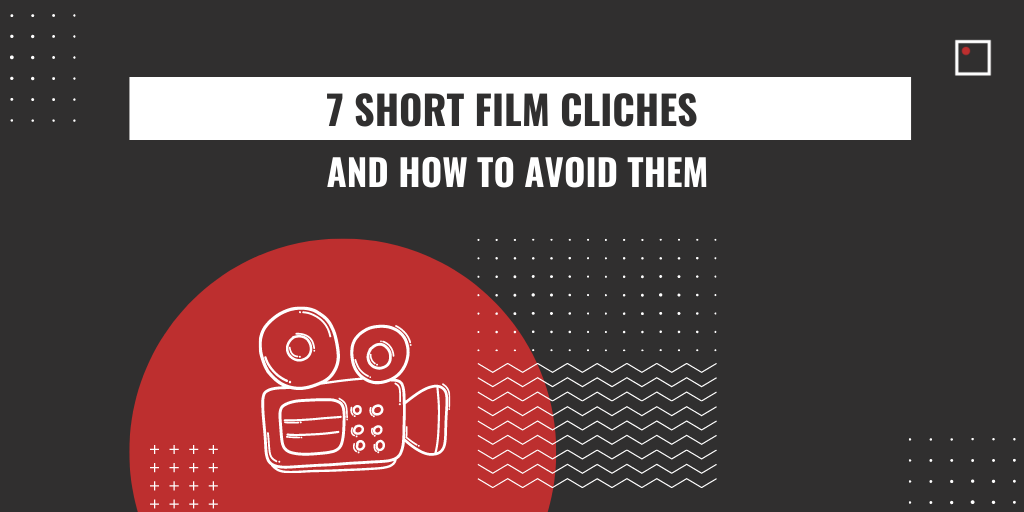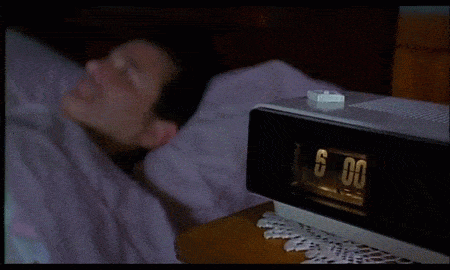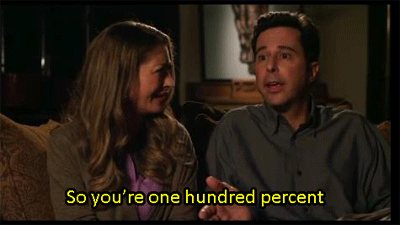7 Short Film Cliches (And How to Avoid Them) in 2021
USING CLICHES WILL DISRUPT THE PUBLIC’S VIEW OF YOU AS AN ORIGINAL OR UNIQUE FILMMAKER. WE LIST 7 OF THE MOST COMMONLY USED FILM CLICHES AND GIVE YOU ALTERNATIVES TO AVOID USING THEM YOURSELF.

Written by Johnny Papan
Short films are as old as cinema itself. The Lumiere Brothers launched the motion picture phenomenon when they, for the first time in history, screened 10 of their short films to the public in 1895. At first short films were the only form of cinema being made. Most films didn’t exceed 10 minutes in length until the 1900s. The world’s first feature film, The Story of Kelly Gang, was released in 1906, 11 years after the Lumiere Brothers unveiled this groundbreaking new art form to the masses.
Today, short films are as prominent as ever. They’re a go-to launching pad for filmmakers and can be utilized as a proof of concept for longer films or to showcase an artist’s prowess in a quick and compact way. Thousands of short films are produced every year and production values can vary from cinematically exquisite to D.I.Y. home movies. That being said, regardless of the production budget, a strong, well-told story is what truly matters.
With so many films being made every year, you’re bound to see similarities. However, some tropes cross the line of comparability and have become outright cliches over time. If you are a new filmmaker or film school student who wants to stand out amidst the sea of film festival submissions, here is our list of 7 cliches to avoid if you’re making a short film.
1. The Alarm Clock Opening

Wait, does opening with this point make our list a cliche? Maybe not. But the same cannot be said about your film. The alarm-clock opening has been seen in countless shorts and features. It’s often followed by a shot of our main character shooting out of bed because they’re late for work or waking up from some kind of significant dream. If we want to talk cliche within a cliche, the dream will most likely be about a dead lover.
Films are supposed to be an escape from our reality. Most audiences already hate the sound of our own morning alarms. We don’t need to be haunted by your character’s alarm too.
“We need to start a film just before the inciting incident happens,” says InFocus Film School Head of the Writing Program Crystal Verge. “Nobody cares about people eating breakfast, or getting out of bed or showering. What’s dramatic about that? Our opening scenes have to grab an audience and tell them who the protagonist is right away. We have to see their ‘wound’. You’re not gonna see it getting out of bed.”
2. Flashbacks
Flashbacks can be beneficial if we already have some kind of relationship with your character. The problem is short films are short. We don’t spend enough time with your character. Therefore, many shorts fall into this trap. They become a big flashback that squeezes between two small scenes of the present. As a filmmaker, you’re relying on the flashback to give audiences a reason to care about your character, which can feel like a cop-out.
“I don’t think flashbacks are necessarily a bad idea,” says InFocus Film School Writing Instructor Carleen Kyle. “I just think it’s overused. It usually starts with writers not doing enough character work to start with. If your characters are really fleshed out, you don’t really need to be so obvious about what their backstory is, it’s going to come out into character.”
3. Crying in the Bath/Shower
Getting good cry performances is pretty diffcult. Team a new filmmaker with an inexperienced actor and the only ones crying will be the audience. Well, that’s not totally true. Some will cringe and others might laugh.
For whatever reason, the bath or shower seems to be the most popular spot for a good cry in movies. Some can argue that it can represent “bathing/drowning in sadness” or a way to represent “cleansing”, usually from guit. Sometimes I wonder if the crying scene took place in the bath as a backup plan in case the actor couldn’t trigger the waterworks.

Like the point brought up earlier, there is not a lot of time for us to connect with characters in short films. At least not in a sense where you want to cry with them. We cry alongside our loved ones, our best friends, and not a character who is sad about all the mean things they did in that seven-minute flashback we just watched.
It’s not impossible to effectively execute sadness and crying in a short film. But you should back it up with a compelling story, an excellent actor, and your own advanced filmmaking skills. Otherwise, your audience reaction may be the opposite of what you hoped.
4. Black And White Films
For whatever reason black and white seem to add panache to a film. An artistic mystique that makes it feel a bit more highbrow. We see it in photography as well. It can add an extra layer to a film if done deliberately. A recent example of this is Robert Eggers’ “The Lighthouse,” released in 2019. In a recent interview with CinemaBlend, Ebbert explains his reasoning for shooting the film this way:
“The blacks sort of bottom out suddenly in a way that’s very satisfying as a nice micro-contrast and toothy grain. And it is kind of flat and primitive, but in a way that helps the crusty, dusty rusty, musty, atmosphere of the movie. And communicates the bleakness and austerity of their lifestyle and this island much better than if we’d shot digital with colour.”

Because of artistic flair, many new filmmakers opt to make black and white shorts. It’s not the worst thing on this list, but it’s still a common cliche that can come off as cheesy if it’s done without real purpose.
“It’s an effort to try to make the movie seem more serious,” says Carleen. “Unless it’s a film noir, or it takes place in the 60s or something and you want to sort of represent what television looked like back then or something, you know, there’s reasons to do it. But if you’re doing it for no real reason it can come off as pretentious silliness.”
5. Entire Film Is a Conversation/Exposition
There’s a saying out there: “Action speaks louder than words.” This is especially true in film. However, many shorts fall into the trap of being nothing but one big, long conversation. Sometimes it’s at a kitchen table, sometimes it’s at a therapist’s office. Sometimes the whole conversation is on the phone, cutting between two people in different locations. These films usually revolve around someone coming to terms with a past mistake. This mistake usually unveils itself within this same conversation.
Films like this are not engaging. There’s no visual stimulus, and it’s hard to raise the stakes. The fun part about film watching our main character have to overcome obstacles. The intensity is taken away when the only obstacles being thrown are words from an opposing character.
Avoiding this cliche can be a tricky one. If you notice your film reads like one giant, dragged out conversation, try imagining how some key scenes would play out without any words, while still getting your point across.
6. “Coming Out” of the Cliche
Though homosexuality has become more normalized in society, it was once a very taboo subject. Today, it still can be a touchy subject for many young people. Understanding your own sexuality, especially if it’s against the grain of the belief system of which you were raised, can draw complex emotions that many filmmakers have dealt with.
You’re trying to get young writers to speak from their own experience, but they still tend to treat the subject in a cliche matter,” says Carleen. “You just always end up with the character coming out through exposition dialogue in a confrontation at the end. It’s a topic I think that could be well done but it’s still being treated the same way.”
For example, your protagonist simply states their homosexuality usually to a religious or homophobic family member, or a best friend whom they are secretly in love with. This big reveal will often play out at the end of the film.

Carleen recommends trying to explore subtext as a way of revealing your character’s sexual identity, and finding more creative ways for the protagonist to come out, aside from just simply stating it to someone who may or may not be accepting or approving of the fact.
As mentioned earlier, actions speak louder than words. If you want to create drama with your reveal, the stakes should be high. Perhaps the reveal comes in unexpected circumstances? Perhaps the identity is revealed through an action not meant for prying eyes? Caught in the act, if you will.
7. Suicide
Suicide is a theme in many short films, especially from younger writers. On one hand, writing is about speaking our truth and it’s no surprise that many artists have dealt with circumstances that may have led to suicide crossing their mind. We encourage writing about your own experiences or thoughts on a subject. It’s natural.
On another hand, many novice filmmakers want to end their film with a big dramatic climax. This often results in the death of either the main character or someone the main character cares deeply about. Taking one’s own life is the ultimate tragedy. However, it’s hard to execute it, especially for newer filmmakers, in a way that hasn’t been seen many times before.
“It comes from thinking in order to create drama, it has to be something that’s huge,” says Carleen. “You know, like a death or suicide. Somebody’s got a gun to your head. People forget that sometimes small things in life can greatly affect us too.”
Conclusion
At the end of the day it’s your film. You can make it however you want. This isn’t necessarily a list of things that are right or wrong to do a film, just things that have been done many times before. In this growingly saturated market, originality is key if you are a new filmmaker.
There’s a saying that there are only, at the core, seven core stories in existence. That could very well be so, but the way in which you tell those stories is infinite. The characters, locations, relationships and challenges should all be drawn from you, the writer. The way in which it’s told is a dramatic exaggeration on your personal reality. Don’t be afraid to skew your experiences to fit a fantastical narrative. And most importantly…Don’t be afraid to think of something that hasn’t been seen before.
Related Links:
InFocus Film School Film Production Program






